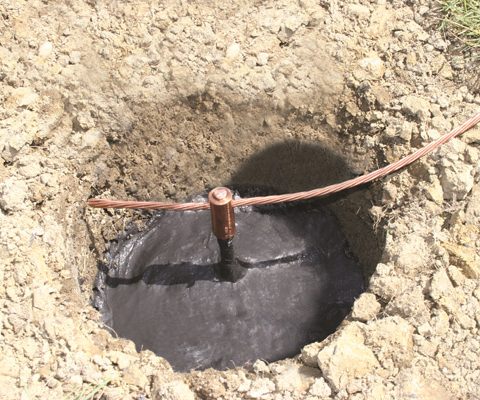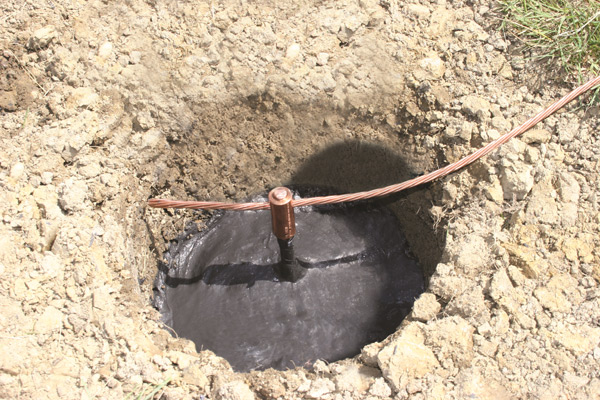The second post in the nVent ERICO four-part blog series addressing the common myths and misconceptions which create confusion around the design and installation of grounding systems is focusing on galvanized rods and copper-bonded rods and the differences. We’ll address the following myths:
- Galvanized rods have the same performance as copper-bonded rods.
- Copper is used in ground rods because of its conductivity.
Myth 4: Galvanized rods have the same performance as copper-bonded rods.
When comparing galvanized rods and copper-bonded rods, there are several differences in the product production that contribute to the overall performance and longevity.
- Both rod types are composed of a steel core. Copper-bonded rods use cold drawn steel with a tensile strength of 90,000+ psi. Most galvanized steel rods use hot rolled steel with a tensile strength of 58,000+ psi. Higher tensile strength leads to less rod deformation during installation.
- The thickness and type of coating material determines corrosion resistance and service life. Copper protects the steel from corrosion. The zinc sacrifices itself for the steel in the form of sacrificial anode, and when the zinc is consumed, severe corrosion sets in. Copper-bonded steel rods are coated with 10 mils (.010” or .254mm) of copper, and galvanized steel rods are coated with 3.9 mils (.0039” or .099mm) of zinc. The coating thickness is limited by hot dip galvanizing process.
Studies Contributing to Galvanized vs Copper-Bonded Rods Research
Three different studies have been conducted over the last 100 years, all comparing resistance to corrosion and the service life of both types of ground rods. All studies mentioned below highlighted the performance differences namely in length of service life.
- Underground Corrosion – National Bureau of Standards from 1910 to 1955 – Copper, copper clad and galvanized electrodes were tested. Galvanized steel pipe specimens were buried for 10 years, and data showed that zinc coatings of .0035 inches or less were destroyed, pitting of the underlying steel occurred. Copper clad steel samples were buried for 13 years, and the average total penetration was 0.009 inches.
- Naval Civil Engineering from 1962 to 1969 – Over 7 years, field testing of grounding electrodes established the best type of electrode determined by the following factors: easy to drive, resistant to corrosion and the electrodes should not cause corrosion to nearby metals. As a result, galvanized and mild steel rods were prohibited for use by the United States Navy.
- National Electrical Grounding Research Project (NEGRP) from 1992 to 2002 – This study, which included copper-bonded and galvanized ground rods, started in 1992 and was governed by NFPA®’s Fire Protection Research Foundation. The study measured soil resistivity, ground electrode resistance, soil moisture and soil temperature. The final corrosion data indicated that zinc plated ground rods have an average service life of 15 years and the copper coated ground rods have a service life of 40 years plus.
(Download the full text of Grounding Myths for more in-depth explanation on these studies.)
Myth 5: Copper is used in ground rods because of its conductivity.
As discussed in Myth 4, the main reason ground rods are plated with copper is to extend the service life of steel core of ground rods, since copper resists corrosion in most soils.
The choice of material related to ground rod conductivity is not that important. For example, compare the resistivity of copper bonded ground rod [0.159 µΩm] and stainless steel (SS) ground rod [0.720 µΩm]. Despite the fact that the stainless steel ground rod resistivity is 22% higher than that of copper-bonded steel, the stainless steel ground rod is just as effective. Compared to the overall grounding “chain”, the contact to earth and earth itself can be 1000x magnitudes greater than the electrode system, so choice of metals regarding conductivity are not that critical.
Download the full paper for an in-depth analysis of these two myths plus several others which we will feature in future blogs.
Download NowRead Blog #1: Low Earth Resistivity, Earthing vs Grounding, Electrical Currents


